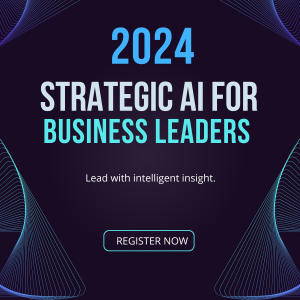AI GLOSSARY - V
Definition: The process of evaluating the final performance of a machine learning model on a separate dataset not used in training. Validation helps to check how well a model generalises to new data.
Definition: A set of data used to provide an unbiased evaluation of a model fit on the training dataset while tuning the model’s hyperparameters. The validation set is used to avoid overfitting.
Definition: In reinforcement learning, a function that estimates how good it is for an agent to be in a given state or how good it is to perform a particular action in a given state. It predicts the total amount of reward an agent can expect to accumulate over the future.
Definition: In programming and data science, a variable is a storage location paired with an associated symbolic name, which contains some known or unknown quantity or information, known as a value.
Definition: A type of autoencoder that generates a compressed, latent representation of a dataset. Unlike a traditional autoencoder, VAEs are designed in such a way that they can generate new data points that could plausibly come from the original dataset.
Definition: A mathematical modelling and information retrieval technique where text documents are represented as vectors in a multidimensional space. It is commonly used in text-based information retrieval and text mining.
Definition: The process of converting algorithms from operating on a single value at a time to operating on a set of values at one time. In machine learning, vectorisation is used to improve performance by exploiting the parallelism in modern CPUs and GPUs.
Definition: A node or a point where lines or edges meet in a graph. In graph-based data structures or models used in AI, a vertex represents an entity or a data point.
Definition: In robotics and AI, a vision system is a system designed to interpret the environment from visual inputs. This might involve cameras, digital image processing, and machine learning to mimic human vision.
Definition: The ability of a system to identify objects, places, people, writing, and actions in images and videos. It is commonly used in AI for tasks like image and video analysis.
Definition: Leveraging visual sensors or cameras as the input to search for and identify objects within a visual input or to guide a search on the web. It uses AI to understand the content and context of these images.
Definition: The practice of creating visual representations of data or results to make them easier to understand. Visualisation techniques are widely used in AI to illustrate or explain the outcomes of algorithms.
Definition: A technology that recognises spoken words, which can then be converted into text. It is often used in devices that follow spoken commands and for transcription services.
Definition: In the context of data science and AI, volatility refers to the frequency of data updates as well as the structural changes that may affect the model’s ability to predict accurately.
Definition: A volumetric pixel, or voxel, is the three-dimensional equivalent of a pixel. In AI, voxels are used in 3D modelling and imaging applications, where data or images need to be analysed or visualised in three dimensions.




